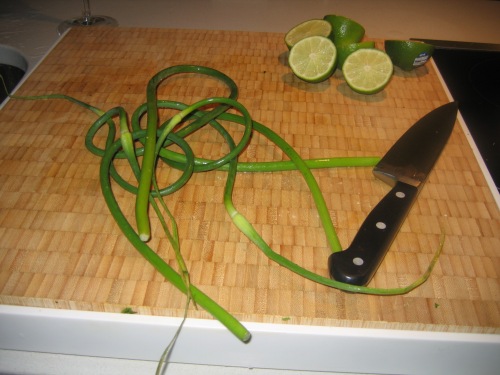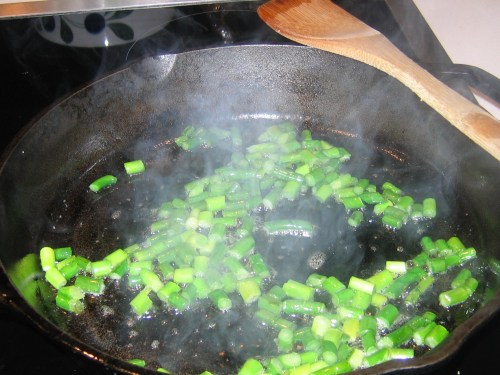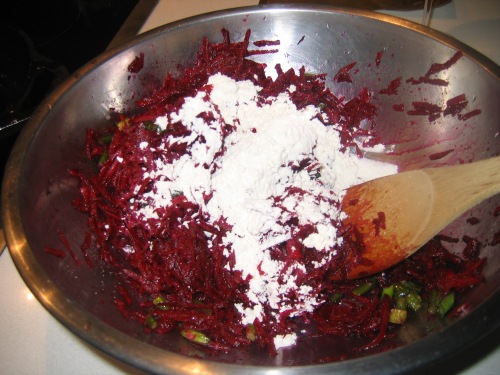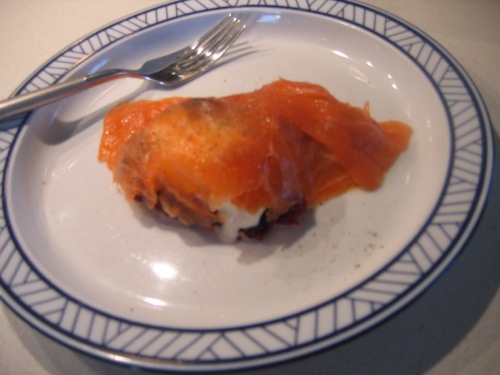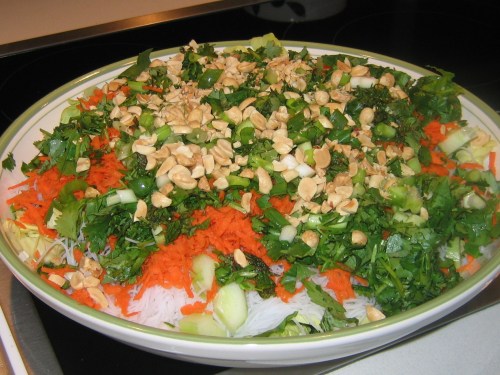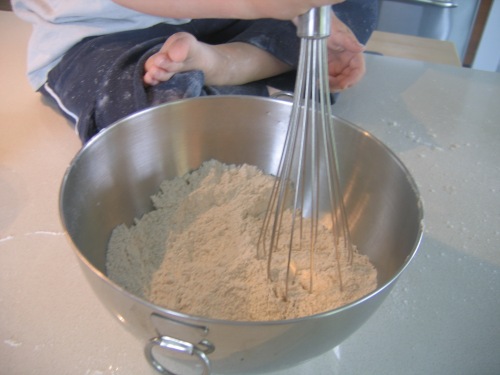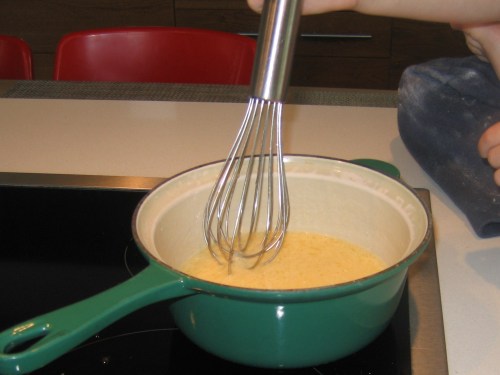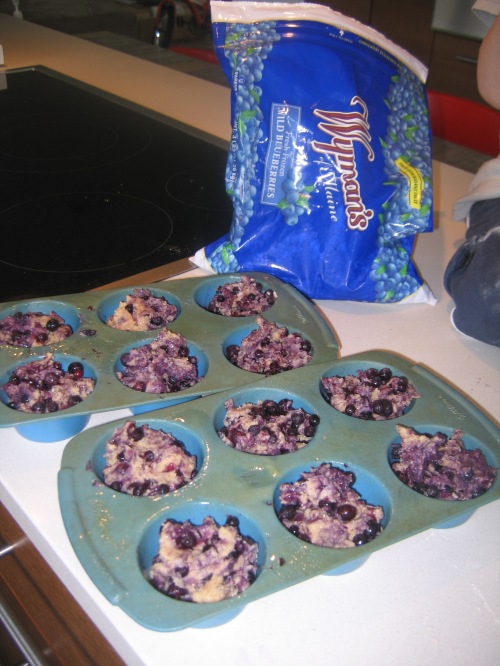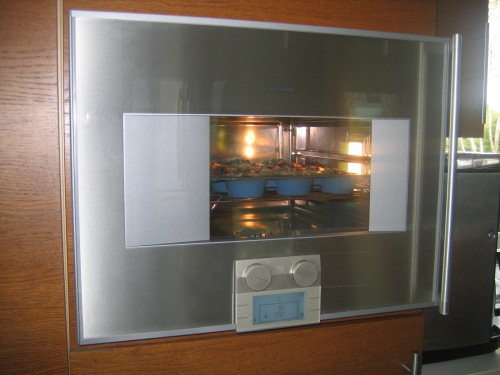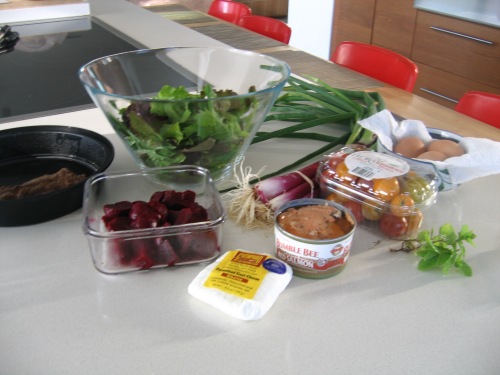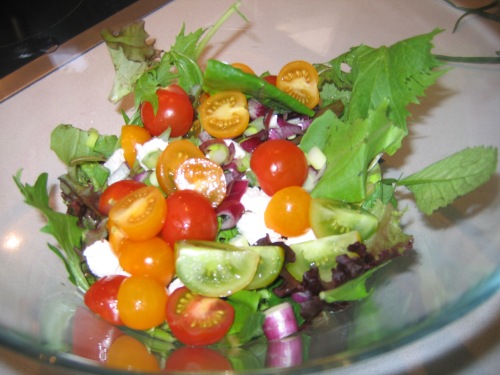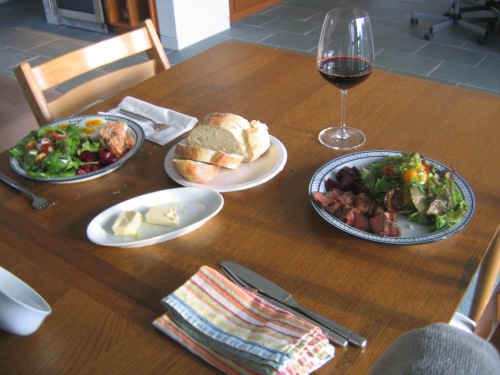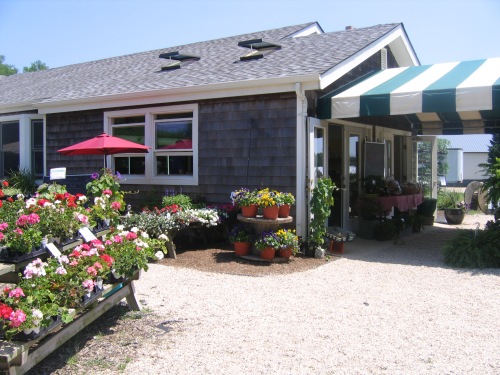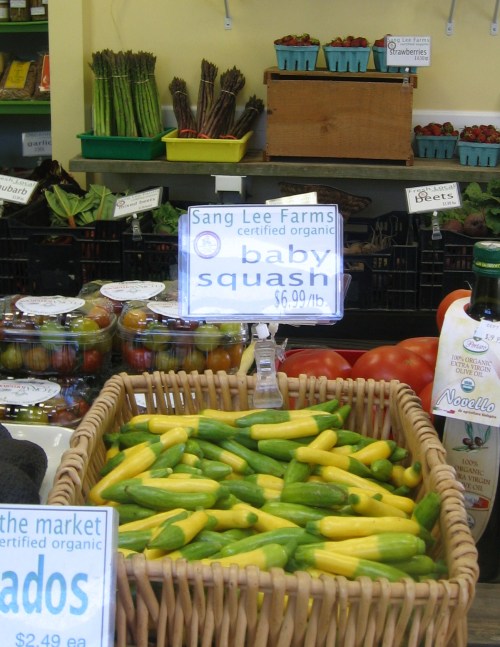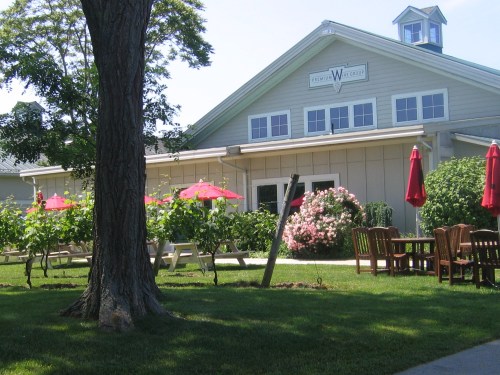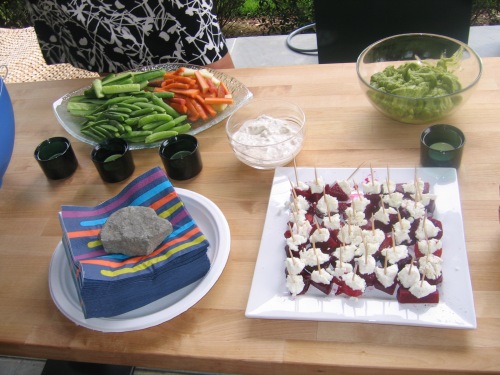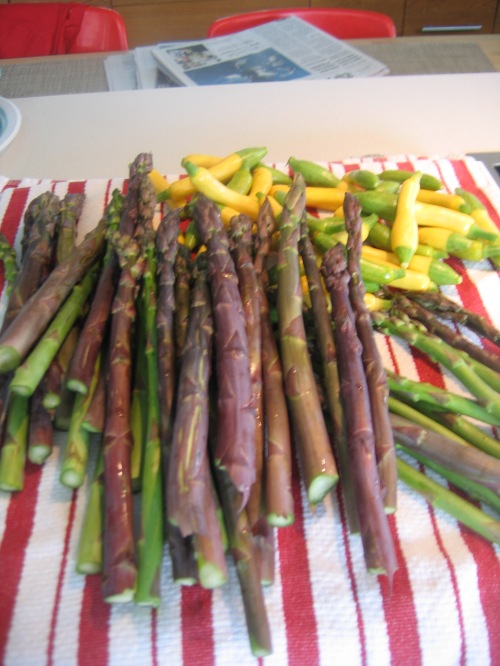My 2 year old GE Profile fridge broke down about 3 weeks ago. Getting a repairman in the Hamptons the week after Memorial Day was impossible! Everybody’s opening up their houses and discovering appliance problems, and the repair services were overwhelmed. Bad timing for a local. Over a week later, the GE man finally showed up, worked on the fridge for two hours, charged me $108 for a new “freezer computer board,” and left, promising it was fixed. But by that evening both the freezer and the fridge had reached an internal temperature of 84 degrees farenheit. I lost patience entirely with my GE fridge (which I never liked very much anyway) and bought a new fridge: a Bosch. It’s terriffic.
Living for three weeks with the CSA veggies from Sang Lee coming fast and furious but no fridge in which to put them was frustrating. Tragic, even. Some fell victim to the situation. Others I managed to preserve in our little wine fridge, which was mostly taken up with milk and a few other highly perishable items.
With the new Bosch fridge in place, I got back into my groove this past weekend and put together a small dinner party to use up a few backlogged items. I had beets, as ever. I had something totally new to me called garlic scapes. I had Sang Lee cilantro. I had lettuce. Tons of lettuce. Beautiful, delicate, fresh lettuce. (Lettuce that needs to be refrigerated!) I developed a menu for a small dinner party using these items plus a few more from the supermarket.
This blog could be called 1000 ways to use your beets. I wanted something different, and I felt like smoked salmon. I googled around and alighted upon a Mark Bittman recipe for rosti made with beets. The recipe called for rosemary as a seasoning but I decided to use the garlic scapes instead and top it with crème fraîche and smoked salmon.
My guests asked me what garlic scapes were and I didn’t know the answer. I still don’t. I think they have something to do with thinning out the garlic crop, but I’m not sure. I really didn’t know what to do with these garlic scapes but I suspected they needed to be well cooked to mellow their flavor. That may or may not be true — I really have no idea, but I didn’t want to take chances. So I diced them and sauteed them in some butter.
Then I added them to the grated beets, which I mixed with a little salt and flour to make the batter.
I fried this mixture up like a big cake in more butter in the same garlic-scape-infused skillet, flipped it splendidly onto a plate, slid it back into the skillet with a little more butter, divided it between our plates, topped it with crème fraîche and smoked salmon, whereupon it was devoured. The garlic scapes were a lovely addition. They were garlicky in the best possible way, with an extra freshness and absolutely no bitterness. No fear of garlic scapes!
I intentionally made a fairly rich starter because the main course was very light. For years I’ve been wanting to master the art of Thai/Vietnamese noodle salads, which I love to eat in restaurants. My husband and I will never forget a Thai beef salad we once shared in a restaurant in Manhattan in Chinatown down near the courthouses. It was so spicy, we both started crying while we ate it. Yet, at the same time, it was incredibly delicious, and we couldn’t stop eating it. We sat there, shoveling this salad into our mouths as fast as we could, with tears streaming down our faces.
We don’t really have any Thai or Vietnamese restaurants on the East End, except for an outrageously expensive and mediocre one in Sag Harbor. That is one big problem with living in the Hamptons: good cheap ethnic food is almost non-existent. If you crave something like a Thai beef salad, you’ve got to learn to make it yourself.
That’s what I’ve been trying to do for years, without success. I didn’t know what I was doing wrong until recently. I figured it out by reading Mark Bittman’s recipe for the dressing. (Bittman again!) He mixes the fish sauce with lime juice and sugar. Ok, I had been doing that. But here is the secret: he tells you to add a tablespoon of water! It turns out that makes all the difference between a dressing that is unplesantly strong and one that is perfect. Who knew?
So here is my take on a Thai beef salad. Sang Lee boston lettuce, topped with cooked, chopped thin rice noodles, topped with cucumber, grated carrots, copious amounts of cilantro and mint, and chopped dry -roasted peanuts.
I topped it with slices of marinated, grilled flank steak and Bittman’s watered-down dressing, and served it.
 I can’t say it made us cry, but it did satiate (temporarily) my cravings for Thai food.
I can’t say it made us cry, but it did satiate (temporarily) my cravings for Thai food.
